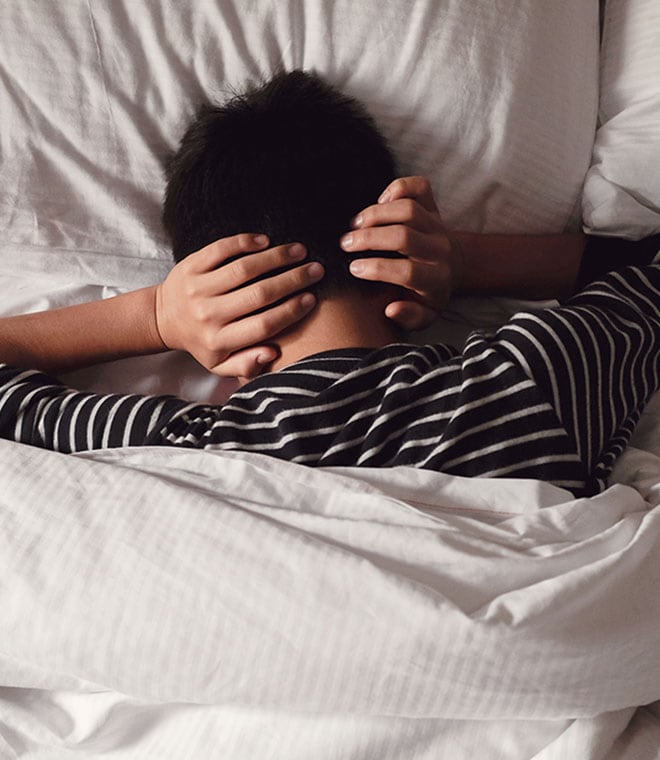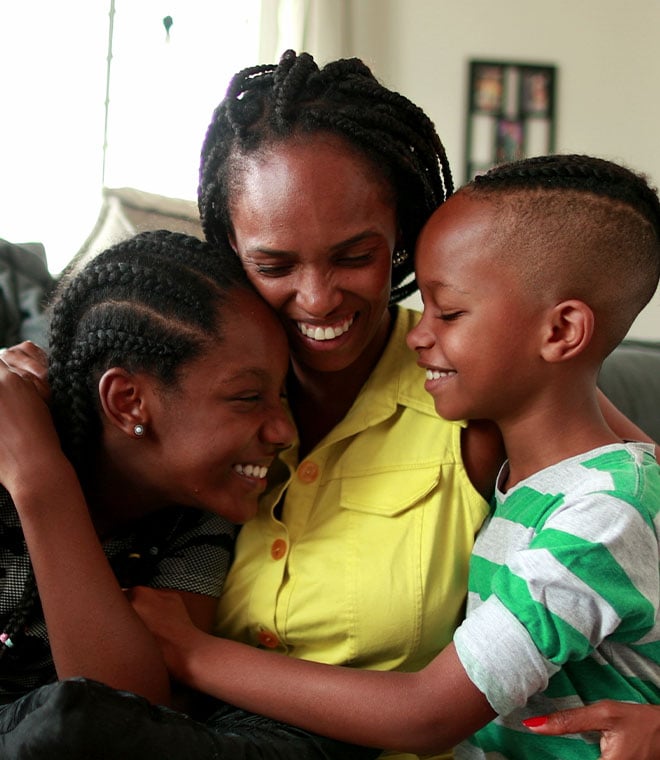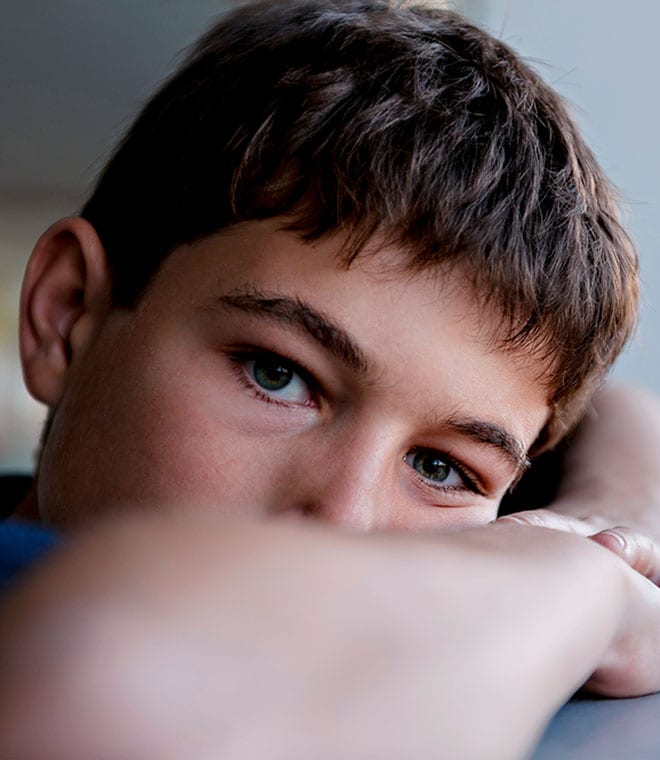Health
Children's anxiety disorders and treatment: What you need to know
By Rebecca Thomas, RN, BSN, CPHQ Nov 14, 2024 • 9 min
It's normal for kids to feel anxious sometimes. Children and youth can become anxious about school, social situations or family stress from time to time. But anxiety disorders involve more than temporary feelings of anxiety, worry or fear, and the symptoms may not be noticeable, and they can often be overlooked. Anxiety disorders are common mental health conditions, so the U.S. Preventive Services Task Force (USPSTF) recommends screening children and adolescents ages 8 to 18 years for anxiety, including those who are not showing recognizeable signs or symptoms of anxiety. When someone has an anxiety disorder, the anxious feelings do not go away, and over time, they can worsen to the point that the anxiety interferes with daily activities, such as job performance, schoolwork and relationships. This is when medical help should be considered.
Types of anxiety disorders
There are different types of anxiety disorders in children, including separation anxiety disorder, generalized anxiety disorder, panic disorder and social anxiety disorder.
Separation anxiety disorder
It's normal for babies and very young children to feel anxious when they’re separated from their parents for the first few times. However, children will usually soon adjust to being apart from their parents. When a child doesn’t outgrow this fear of separation, it can lead to them wanting to miss school, sleepovers, playdates, or other activities without their parents. They may also have trouble sleeping alone or falling asleep.
Generalized anxiety disorder (GAD) in children
GAD is characterized by excessive worry about everyday problems for at least six months. Those with GAD have a difficult time controlling their worry, affecting different areas of their lives. This type of anxiety is not the same as occasionally worrying about stressful life events. People who live with GAD experience frequent anxiety for months and sometimes years. GAD symptoms in children may include restlessness, tiring easily, difficulty focusing on homework or assigned chores, headaches, muscle aches, stomach aches, unexplained pains, irritability and sleep problems.
Panic disorder in children
Children with panic disorder often experience unexpected panic attacks. These are sudden periods of intense fear or the sense of losing control even when there is no clear danger. Symptoms may include sweating, dizziness, shaking, chest pain, sensations of shortness of breath or a pounding heart, and feelings of impending doom. Those with panic disorder may also worry about when the next panic attack will happen and try to avoid certain places or situations they associate with the panic attacks.
Social anxiety disorder in children
Children with this type of disorder experience intense fear of social situations, especially if the child fears a possibility of feeling embarrassed, judged or rejected. While many children may feel some degree of this, symptoms of social anxiety disorder include blushing, sweating, shaking, difficulty making eye contact or being around people they don’t know, pounding or racing heart, feeling self-conscious in front of other people, worrying for days or weeks before an event, avoiding social situations and having a hard time making and keeping friends.
Does your child have an anxiety disorder?
Evaluation for an anxiety disorder often begins with a visit to a healthcare provider. Some physical health conditions and medications can imitate or worsen an anxiety disorder. A thorough mental health evaluation is needed to assess the severity of symptoms. It’s also helpful for identifying any other possible mental health conditions, such as depression or obsessive-compulsive disorder, that may often coexist with anxiety disorders.
Treating children with anxiety disorders
Anxiety disorders in children are treated with different options, depending on many factors, including the child’s age, severity of symptoms, and any other mental health conditions they may have. Psychotherapy (such as talk therapy or cognitive behavioral therapy, parent-child and family interventions), medication or a combination of both may be recommended by your child’s healthcare provider. If a medication is prescribed, the child’s healthcare provider may need to try several medications before finding the right one. Some medications may work better depending on the anxiety disorder diagnosed. It is also important to discuss all of your child’s existing health conditions and medications they already take with their healthcare provider to identify and avoid possible interactions between medications or medications that may worsen other health conditions.
How to help your child with anxiety
Therapy is a great resource for children and families dealing with anxiety and mental health issues, but there are ways to help your child at home in addition to counseling. Some useful ideas may include:
- Letting your child know you're there to talk about their feelings
- Remaining calm when your child becomes anxious about a situation or event
- Being flexible with the normal routine and expectations during stressful times
- Avoiding punishing mistakes or when your child regresses
- Recognizing and praising small accomplishments
- Planning ahead for transitions, such as allowing extra time to get ready for school in the morning
- Talking about potentially triggering situations before they occur
- Paying attention and monitoring your child closely for signs of worsening anxiety or an increase in nervousness, fears or other symptoms
- Promoting good health habits, including adequate nutrition, sleep and exercise
- Seeking immediate medical attention if your child or adolescent experiences suicidal thoughts or behavior, nervousness, agitation, irritability, mood instability or sleeplessness that either starts or worsens during treatment
- Educating others who are regularly involved in your child’s life about their needs, such as teachers, coaches and activity leaders
Children's anxiety related to traumatic events
Sometimes the most protected children are exposed to traumatic events, which can affect their mental well-being and cause temporary or lasting anxiety. In addition to therapy, parents can help children through these traumatizing events in several ways, including:
- Remaining calm and reassuring your child that they are safe
- Discussing the situation with your child and allowing them to ask questions, but avoiding unsettling details that may add to their anxiety
- Answering questions honestly, but giving information on a need-to-know basis
- Avoiding worst-case scenarios that may cause children stress or worry
- Encouraging your child to talk about their feelings
Finding a therapist or mental health professional for your child
While many mental health professionals offer children's services, it's important to find the healthcare provider or counselor best suited to your family and your child's individual needs. It may take time to find a mental health professional who is an appropriate fit for your child’s mental health symptoms. Aside from researching professionals in advance, listen to your child and observe how they react to the therapy and upcoming therapy appointments. If there is any sense of hesitation, dread or anxiety linked to the appointment, or if your child does not trust or open up during sessions, you may consider a different professional who your child may feel more comfortable with.
Updated by Julie McDaniel, MSN, RN, CRNI, November 2024.
Sources:
- https://www.nimh.nih.gov/health/statistics/any-anxiety-disorder
- https://www.nimh.nih.gov/health/topics/anxiety-disorders
- https://www.nimh.nih.gov/health/statistics/generalized-anxiety-disorder
- https://www.adaa.org/living-with-anxiety/children/tips-parents-and-caregivers
- https://www.adaa.org/living-with-anxiety/children-and-teens/tips-parents-and-caregivers/help-your-child-manage-traumatic
- https://www.merckmanuals.com/professional/pediatrics/psychiatric-disorders-in-children-and-adolescents/overview-of-anxiety-disorders-in-children-and-adolescents
- https://www.uspreventiveservicestaskforce.org/uspstf/recommendation/screening-anxiety-children-adolescents
- https://www.aacap.org/AACAP/Families_and_Youth/Facts_for_Families/FFF-Guide/The-Anxious-Child-047.aspx
- https://www.cdc.gov/children-mental-health/about/about-anxiety-and-depression-in-children.html
- https://odphp.health.gov/healthypeople/tools-action/browse-evidence-based-resources/anxiety-children-and-adolescents-screening
- https://kidshealth.org/en/parents/anxiety-disorders.html
- https://www.nimh.nih.gov/health/topics/anxiety-disorders
- https://www.merckmanuals.com/professional/pediatrics/psychiatric-disorders-in-children-and-adolescents/generalized-anxiety-disorder-in-children-and-adolescents
- https://www.aafp.org/pubs/afp/issues/2022/1200/anxiety-disorders-children-adolescents.html



